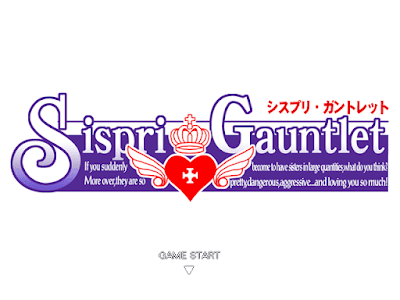So, think back a couple of months to the post I wrote about Chibi-Pop Manga magazine, when I said I'd eventually get around to posting about the bilingual self-published manga Hanamaru Angels? That time is here! And, a quick search online earlier today makes me think that I might be the first person to write about this manga in English, which is nice. It's happened plenty of times for games, but it's not so easy with other stuff.
Anyway, Hanamaru Angels isn't anything especially original, especially in the nineties: it's a light hearted fantasy story about a trio of massively powerful (but still quite incompetent) students at a magic academy in a fantasy world. Very similar in feel to things like Ozanari Dungeon, Dragon Half, Slayers, and so on. That's not a bad thing, though, that kind of silly TTRPG-flavoured fantasy comedy isn't really around much anymore, replaced by much less appealling isekai power fantasies. The book starts with them breaking into the headteacher's office to change their grades, and quickly escalates into them having to go and save the kingdom from an unsealed demon (and the two adventures are causally linked, surprisingly enough).
Though the story as a whole isn't particularly original, there are little bits of originality here and there, and they really make the book and its world shine. Little details like how all the computers are shaped like little desktop dinosaurs with monitors in their bodies, psychic cannons powered by armies of meditating monks, and evil sand, each grain of which is a tiny black hole that sends anything that touches it straight to hell. They really add a lot of charm to the whole story, and it's that cretivity that makes me wish that there was more of Tsugumi Nishino's work available, since they definitely have a lot of imagination and talent. It also makes me wish that the bilingual nature of the main story extended to the two pages of design sketches and notes at the back of the book, too.
Anyway, despite the obscure nature of its existence, it's surprisingly easy and inexpensive to get a copy of Hanamaru Angels, and if you're a fan of those many two-to-four episode fantasy OAVs that were so numerous in the nineties, I think it's definitely the kind of thing you'll enjoy. The back cover promises "Action! Suspense! And fun!", and the comic inside delivers on that. Definitely worth seeking out.

















